
Shakes and smoothies are refreshing, drinkable treats. You can find both at a variety of shops and restaurants, and they're easily made at home. While some believe smoothies are healthier, this is not always the case. The differences between the two comes down to the base used, ingredients added and the overall nutritional value.
The Basics of a Smoothie
A smoothie has a shake-like consistency, but is not a shake. It is a thick, blended beverage made from pureed fruits, vegetables and liquids. The base of a smoothie usually starts with yogurt, milk or juice, but some can be made from all fruit. Grains and oatmeal might be added to a smoothie for thickness. Additional flavorings, such as honey or protein powder might also be added for taste and nutrition. Smoothies are used for meal replacement, served as snacks or drunk with breakfast.
The Basics of a Shake
A shake, also referred to as a milkshake, is a dessert or sweet treat. They aren't typically used for meal replacement, but can be served with a meal. The base of a milkshake is dairy, usually ice cream or milk. Flavor is added from syrups, powders and real fruits, but some milkshakes get their flavor solely from flavored ice cream. Shakes can be topped with whipped cream and candy toppings to finish.
Overall Nutrition
Smoothies typically are high in carbs but have a relatively low fat content -- unless high-fat ingredients like peanut butter are added. Smoothies are sometimes thought of as healthy alternatives to shakes, since they're often made from real fruit and a low-fat or protein-rich base, but those made from fruit-based ice creams or sherbets, juices and syrups can rack up over a thousand calories and feel more like a splurge than a diet drink. Milkshakes, on the other hand, normally contain a large amount of saturated fat and higher calories than smoothies. Even though they're loaded with sugar, however, they have a good amount of calcium and protein.
History and Popularity
Smoothies have been around for several decades, but it wasn't until the health food movement in the 1960s that smoothies became popular. The smoothie name had been around for some time, but it was branded by the Smoothie King, Steven Kuhnau, in 1970 when he began making smoothies as a lactose-free alternative to milkshakes. The milkshake dates back much further. The term first appeared in 1885, but the original milkshake was more like an eggnog made from whisky, eggs and a dairy base. By the 1900s milkshakes transformed from alcoholic to nonalcoholic and featured flavors like chocolate, vanilla and strawberry, and in the 1930s became a popular fixture in malt shops.
Related Articles

Whole Milk Vs. Lactaid Milk
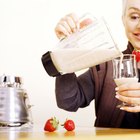
How to Store Smoothies in the Fridge
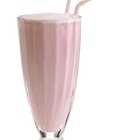
Top 10 Best Tasting Protein Shakes

Facts About Yoplait Yogurt

What Is a Good Substitute for ...
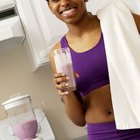
How to Make a Soy Protein Shake

Dates & Yogurt Diet

What Drink Can You Make With Vodka, ...
List of Popular After Dinner Drinks

What Is Balkan Yogurt?

How to Thicken a Milkshake

Types of Monster Energy Drinks
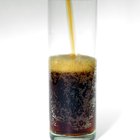
Is There Glucose in Soda?

Chai Tea Frappuccino Calories

How to Make Arby's Jamocha Shake In ...
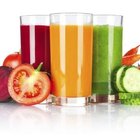
Nutrition Drinks for Diabetics

Is Fat-Free Sour Cream Healthy?

What Is the Highest Proof Vodka?

Calories in Rum Vs. Vodka
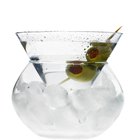
Low Carb Mixed Drinks
References
Writer Bio
Shailynn Krow began writing professionally in 2002. She has contributed articles on food, weddings, travel, human resources/management and parenting to numerous online and offline publications. Krow holds a Bachelor of Science in psychology from the University of California, Los Angeles and an Associate of Science in pastry arts from the International Culinary Institute of America.
Photo Credits
Hemera Technologies/PhotoObjects.net/Getty Images